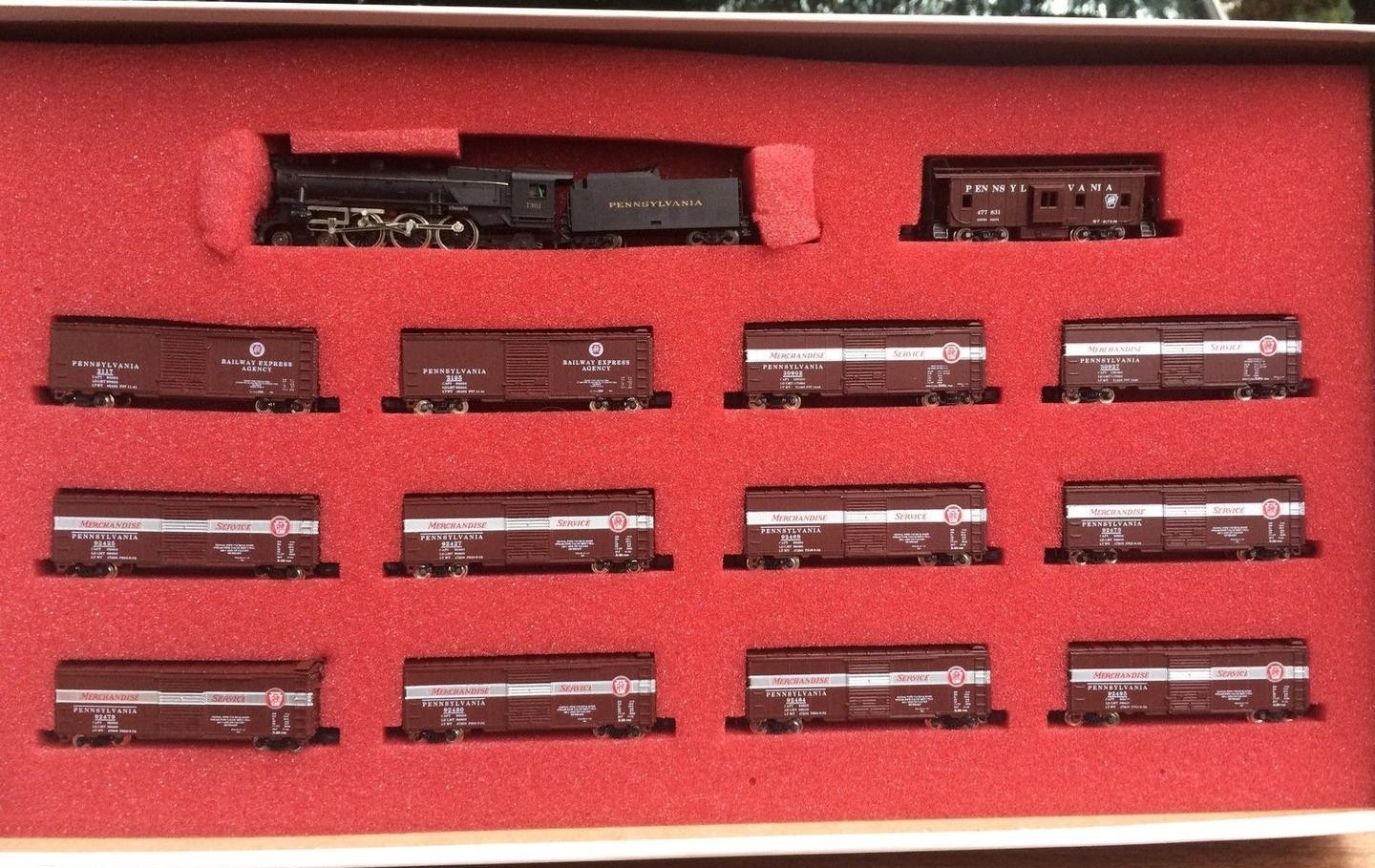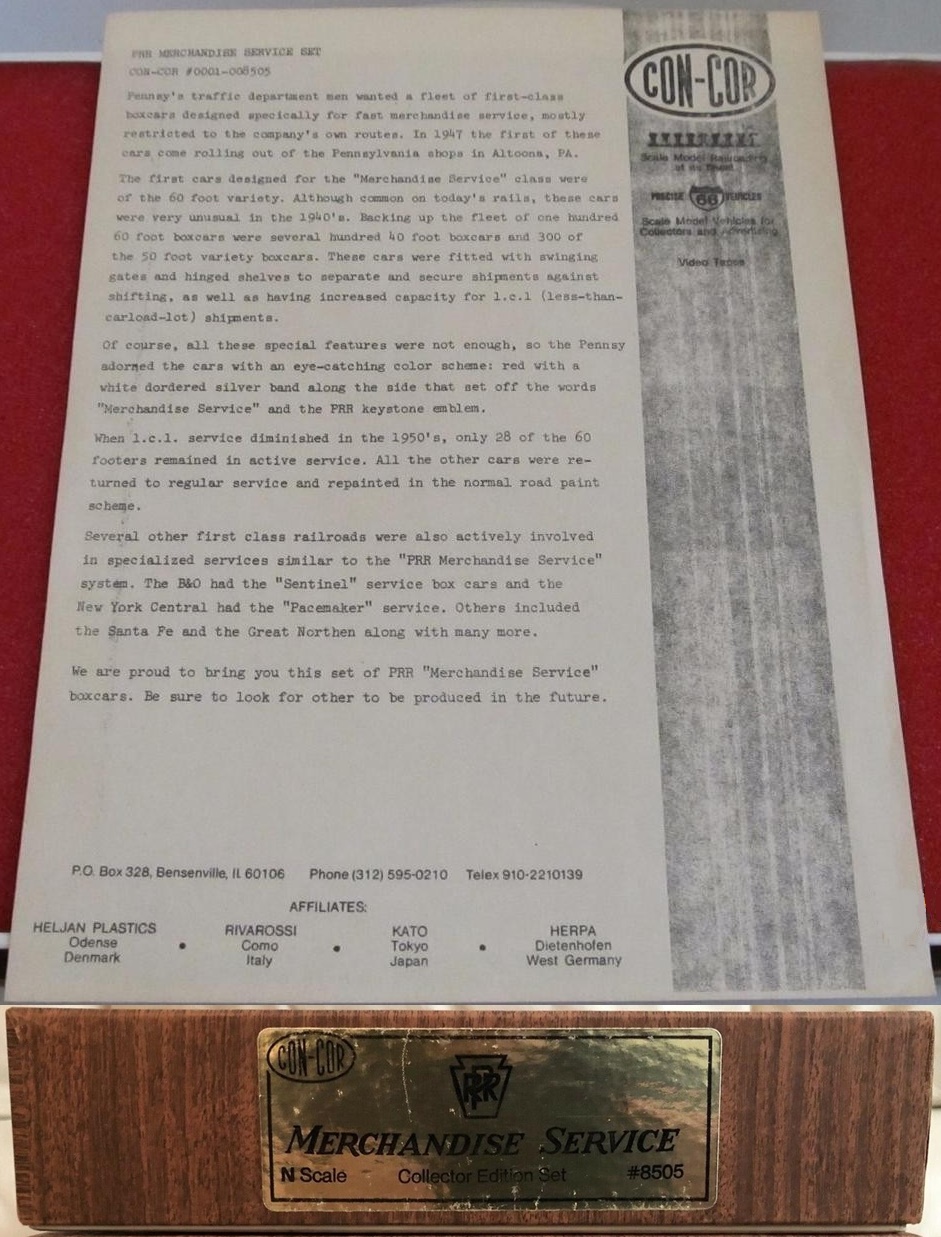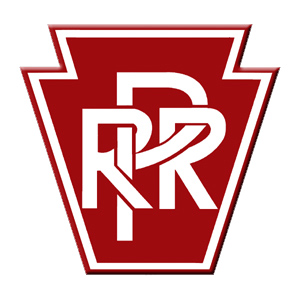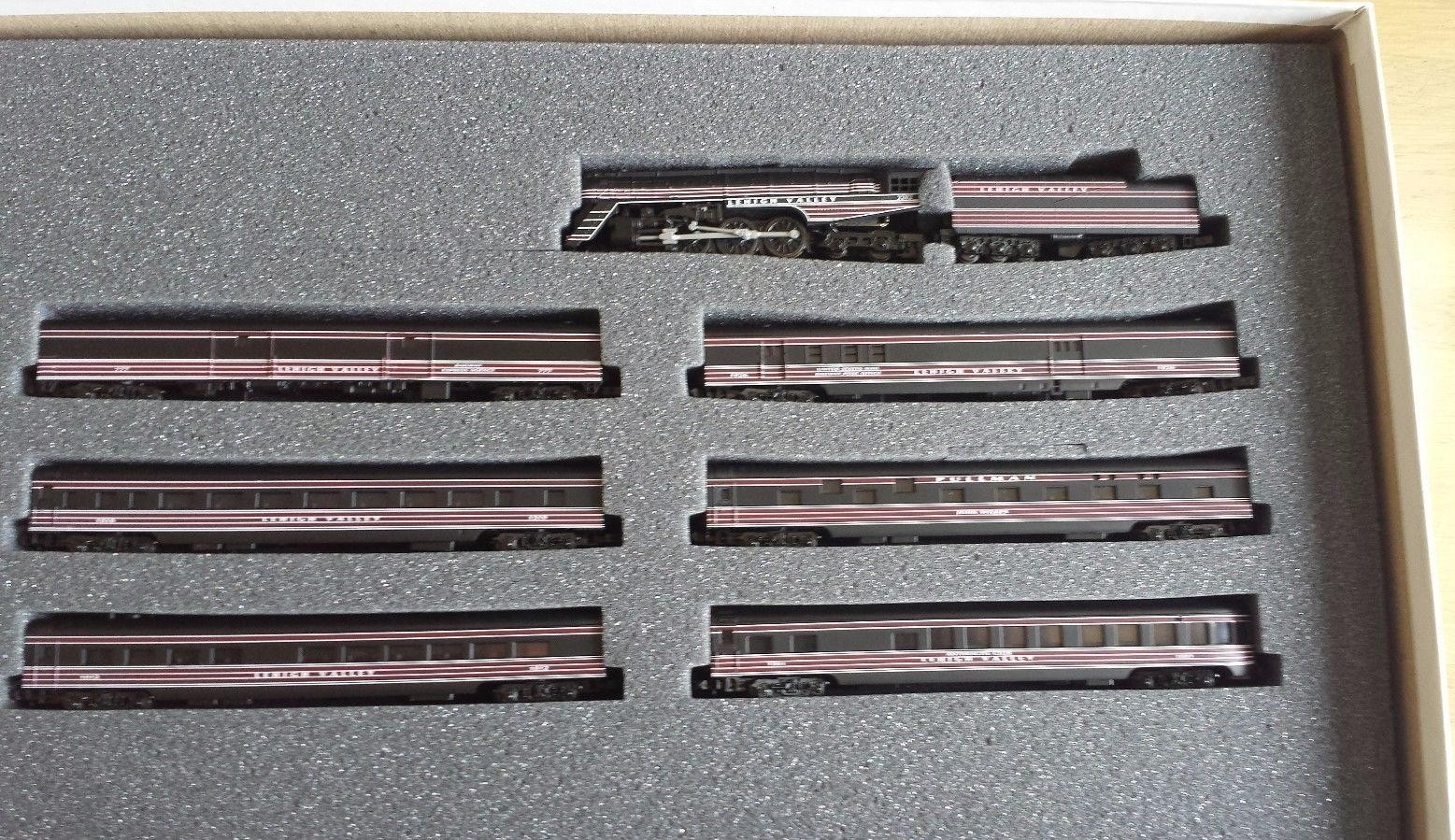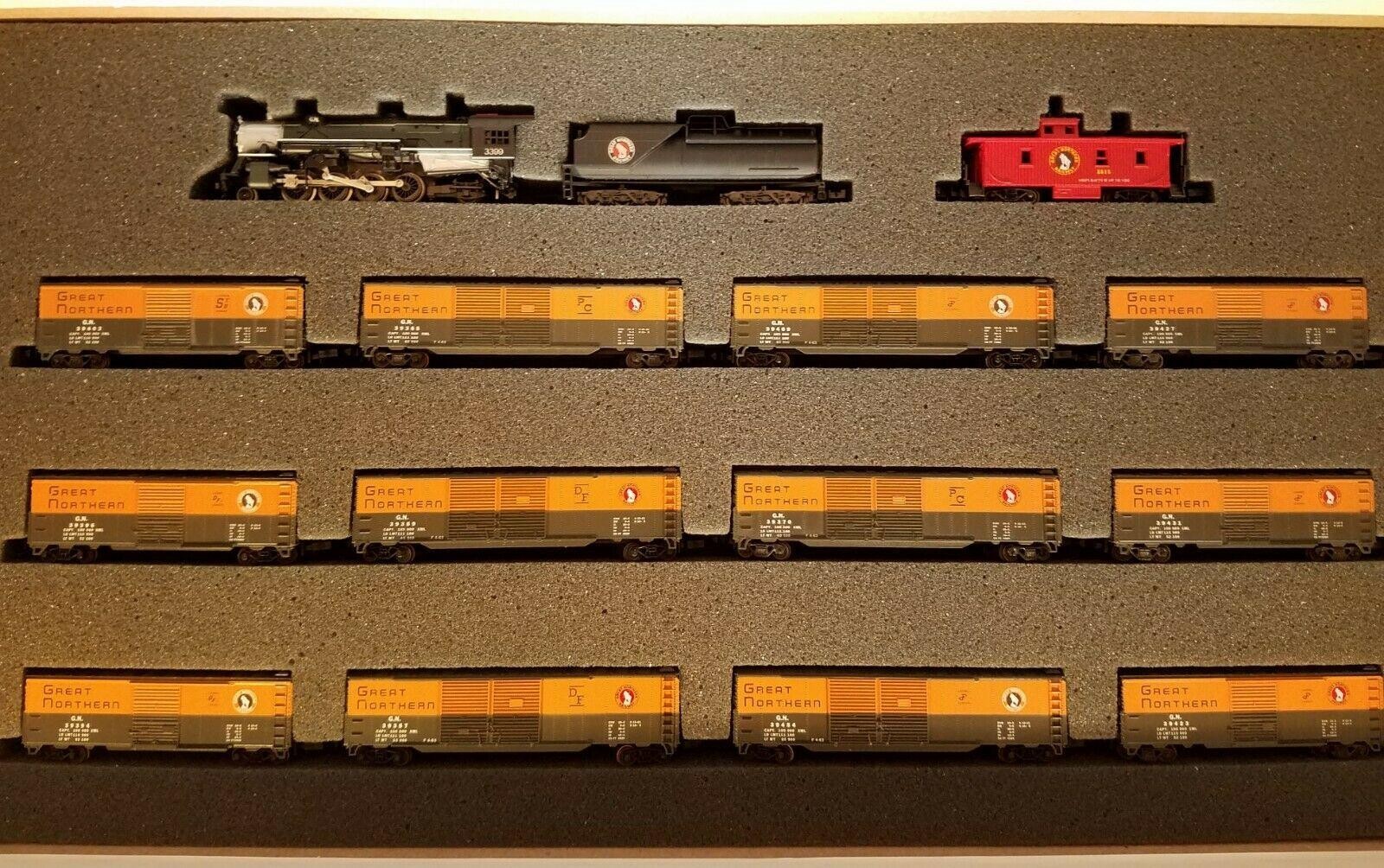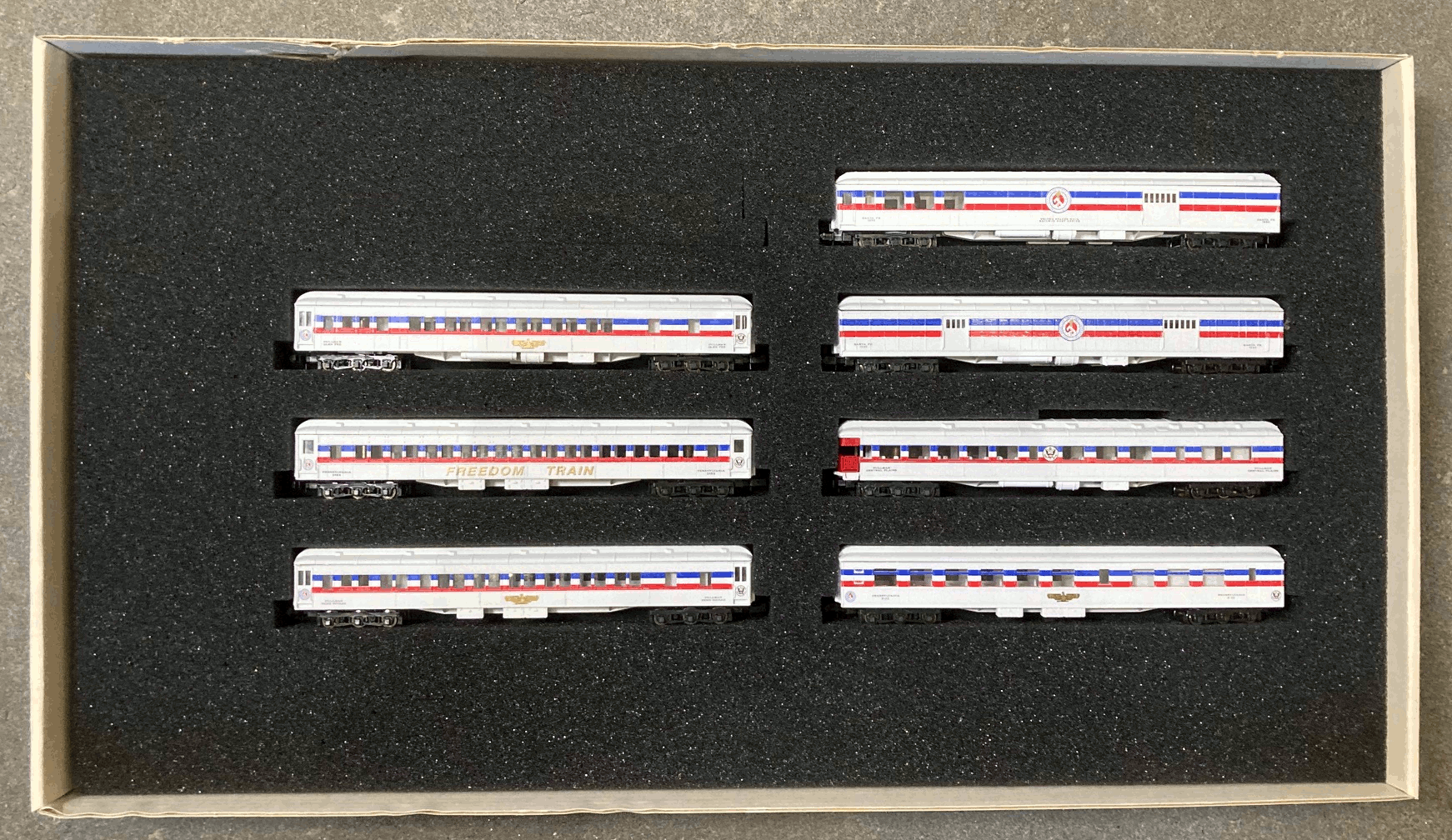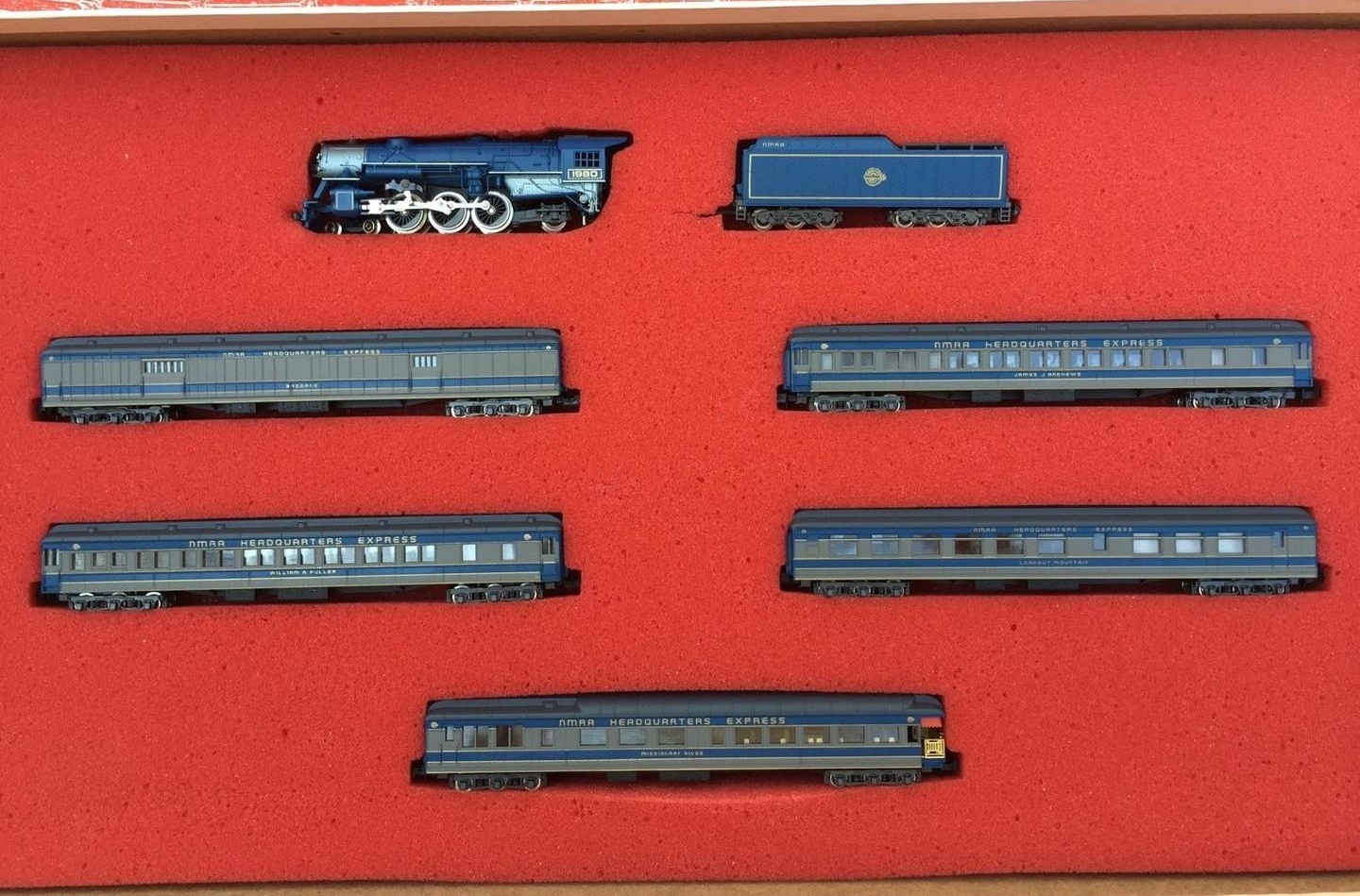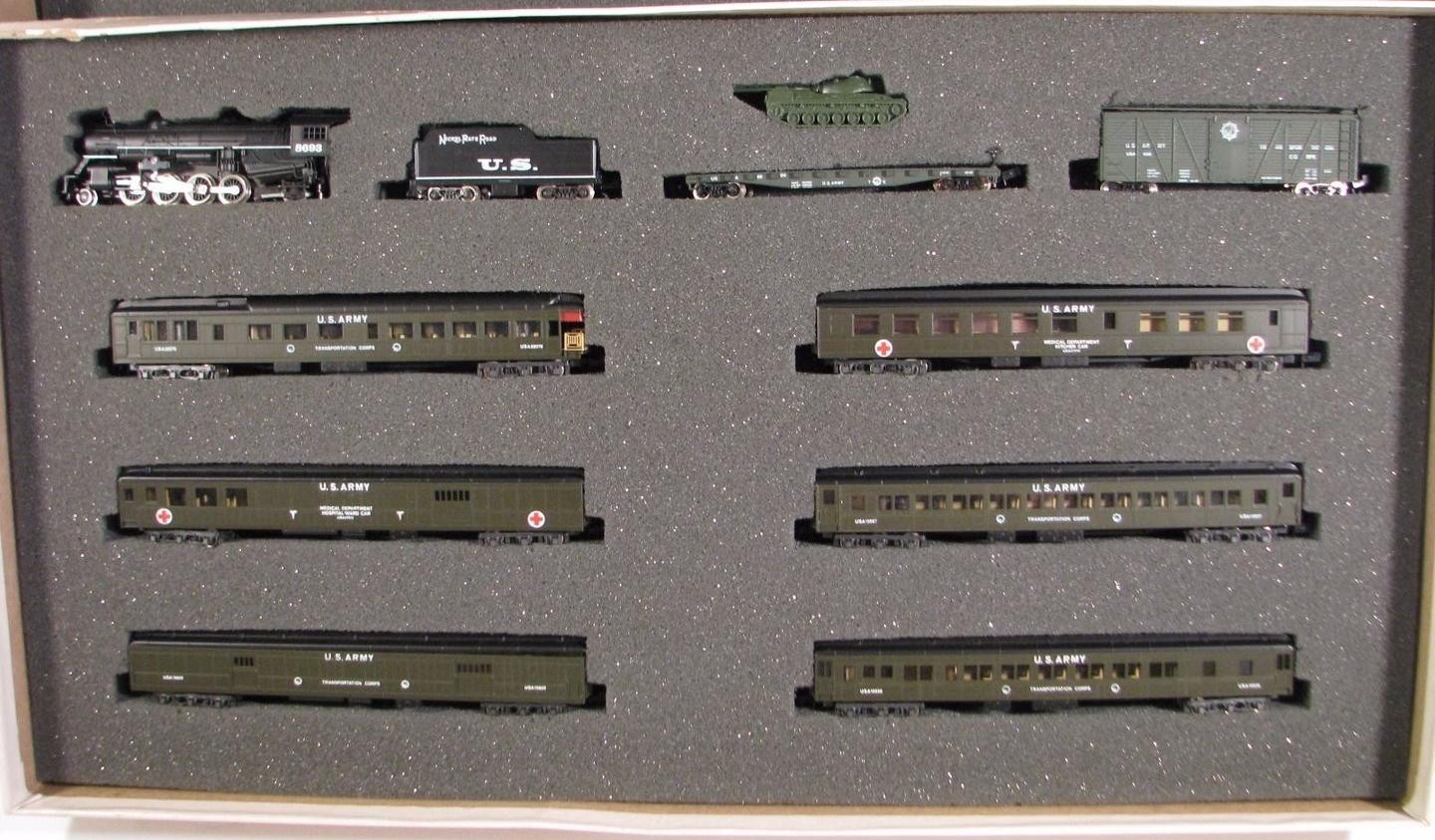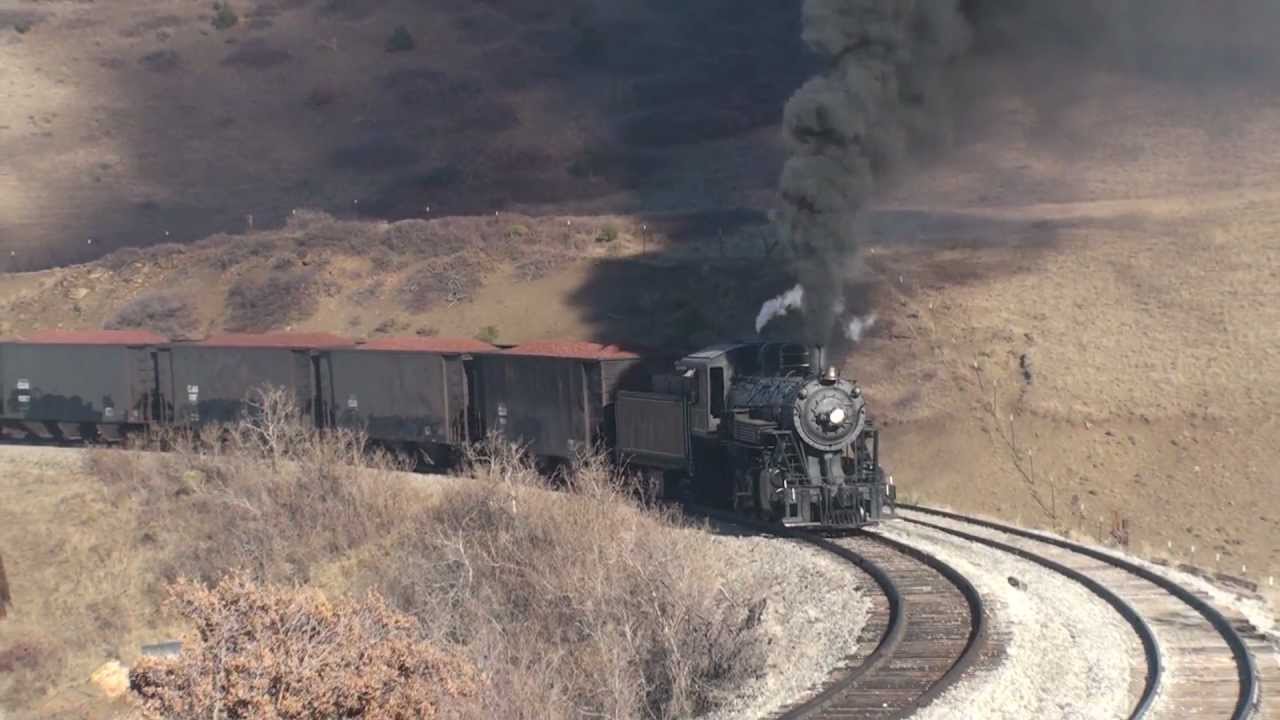Con-Cor - Limited Edition Set #20 / 8505 - Freight Train, Steam, North American, Transition Era - Pennsylvania - 14-Unit
| Stock Number | Limited Edition Set #20 / 8505 |
| Secondary Stock Number | 8505 |
| Tertiary Stock Number | 0001-008505 |
| Original Retail Price | $159.98 |
| Brand | Con-Cor |
| Manufacturer | Con-Cor |
| Body Style | Con-Cor Box Set North American Prototype |
| Prototype Vehicle | Freight Train, Steam, North American, Transition Era (Details) |
| Road or Company Name | Pennsylvania (Details) |
| Reporting Marks | PRR |
| Road or Reporting Number | 14-Unit |
| Paint Color(s) | Maroon, Red & Silver |
| Print Color(s) | Red & White |
| Paint Scheme | PRR Merchandise Service |
| Additional Markings/Slogan | Merchandise Service |
| Coupler Type | Rapido Hook |
| Wheel Type | Chemically Blackened Metal |
| Wheel Profile | Small Flange (Low Profile) |
| Multipack | Yes |
| Multipack Count | 14 |
| Multipack ID Number | 8505 |
| Series Name | Limited Edition Set |
| Series Release/Issue Number | 20 |
| Release Date | 1987-01-01 |
| Item Category | Freight Train |
| Model Type | Steam |
| Model Subtype | 4-6-2 |
| Model Variety | 14-Unit Set |
| Prototype Region | North America |
| Prototype Era | NA Era III: Transition (1939 - 1957) |
Specific Item Information:
Limited Edition Set #20 "Merchandise Service " basic set: one steam locomotive with 12 boxcars and a caboose.
- Minitrix Pacific K4 (4-6-2) #1361 Pennsylvania Steam Locomotive and Tender,
- (1) Caboose #477831 "Central Region"
- (2) REA (Railway Express Agency) Pennsylvania Boxcars: #2117, #2185,
- (10) Pennsylvania Boxcars 'Merchandise Service': #30902, #30927, #92425, #92427, #92469, #92473, #92479, #92480, #92484, #92498
As a number of original buyers purchased both the basic and the add-on set and then mixed up the cars between the two sets, the original composition of each set could not be determined with certainty.
Below are the additional (and different) numbers that we think belong to the add-on set:
- (2) REA (Railway Express Agency) Pennsylvania Boxcars #2141, #2187,
- (10) Pennsylvania Boxcars 'Merchandise Service': #30901, #30920, #90835, #90932, #91329, #91431, #91438, #92278, #92343, #92361
So be careful if acquiring the sets from different sellers, you might end up with duplicate numbers.
Locomotive features include plastic construction, motor, decorative bell, metal handrails and side rods front fixed knuckle coupler and metal wheels and axles. The Freight Cars feature plastic construction, plastic trucks, Rapido couplers and metal wheels.
- Minitrix Pacific K4 (4-6-2) #1361 Pennsylvania Steam Locomotive and Tender,
- (1) Caboose #477831 "Central Region"
- (2) REA (Railway Express Agency) Pennsylvania Boxcars: #2117, #2185,
- (10) Pennsylvania Boxcars 'Merchandise Service': #30902, #30927, #92425, #92427, #92469, #92473, #92479, #92480, #92484, #92498
As a number of original buyers purchased both the basic and the add-on set and then mixed up the cars between the two sets, the original composition of each set could not be determined with certainty.
Below are the additional (and different) numbers that we think belong to the add-on set:
- (2) REA (Railway Express Agency) Pennsylvania Boxcars #2141, #2187,
- (10) Pennsylvania Boxcars 'Merchandise Service': #30901, #30920, #90835, #90932, #91329, #91431, #91438, #92278, #92343, #92361
So be careful if acquiring the sets from different sellers, you might end up with duplicate numbers.
Locomotive features include plastic construction, motor, decorative bell, metal handrails and side rods front fixed knuckle coupler and metal wheels and axles. The Freight Cars feature plastic construction, plastic trucks, Rapido couplers and metal wheels.
Series Information:
Con-Cor "Limited Edition Sets" or "Limited Edition Collector's Sets" were started after requests to 'custom paint' replicas of great passenger trains of the past. As these sets were very limited in quantity, many were sold out before they got to the retailer. While the quality of painting varied from time to time, they are a handsome addition to any collection and impressive on a layout.
With the exception of the first set, all were furnished in a wood-grained cardboard box with colored foam storage insert. For some sets, the manufacturer furnished additional cars or add-on sets.
The number of the set in the series is not printed on the box, but a listing was kept by Con-Cor and available as print-out in the most recent sets or on the (former) Con-Cor website.
Sets #1 to #13 were without stock number; stock numbers have been assigned and printed on the side label starting with set #14.
The wood-grained cardboard box has been used for other sets called "Special Edition Set" by Con-Cor, that only received a regular stock number, but were not accounted in the "Limited Edition Set" collection.
With the exception of the first set, all were furnished in a wood-grained cardboard box with colored foam storage insert. For some sets, the manufacturer furnished additional cars or add-on sets.
The number of the set in the series is not printed on the box, but a listing was kept by Con-Cor and available as print-out in the most recent sets or on the (former) Con-Cor website.
Sets #1 to #13 were without stock number; stock numbers have been assigned and printed on the side label starting with set #14.
The wood-grained cardboard box has been used for other sets called "Special Edition Set" by Con-Cor, that only received a regular stock number, but were not accounted in the "Limited Edition Set" collection.
Prototype History:
A freight train or goods train is a group of freight cars (US) or goods wagons (International Union of Railways) hauled by one or more locomotives on a railway, transporting cargo all or some of the way between the shipper and the intended destination as part of the logistics chain. Trains may haul bulk material, intermodal containers, general freight or specialized freight in purpose-designed cars. Rail freight practices and economics vary by country and region.
During the transition era, steam engines were heavily used by smaller railroads which relied upon secondhand motive power from the Class-I's. During the postwar years, it was fairly uncommon for these railroads to get their hands on modern diesels and furthermore secondhand steam power was both plentiful and cheap.
During the transition era, steam engines were heavily used by smaller railroads which relied upon secondhand motive power from the Class-I's. During the postwar years, it was fairly uncommon for these railroads to get their hands on modern diesels and furthermore secondhand steam power was both plentiful and cheap.
Road Name History:
The Pennsylvania Railroad (reporting mark PRR) was an American Class I railroad, founded in 1846. Commonly referred to as the "Pennsy," the PRR was headquartered in Philadelphia, Pennsylvania.
The PRR was the largest railroad by traffic and revenue in the U.S. for the first half of the twentieth century. Over the years, it acquired, merged with or owned part of at least 800 other rail lines and companies. At the end of 1925, it operated 10,515 miles of rail line; in the 1920s, it carried nearly three times the traffic as other railroads of comparable length, such as the Union Pacific or Atchison, Topeka & Santa Fe railroads. Its only formidable rival was the New York Central (NYC), which carried around three-quarters of PRR's ton-miles.
At one time, the PRR was the largest publicly traded corporation in the world, with a budget larger than that of the U.S. government and a workforce of about 250,000 people. The corporation still holds the record for the longest continuous dividend history: it paid out annual dividends to shareholders for more than 100 years in a row.
In 1968, PRR merged with rival NYC to form the Penn Central Transportation Company, which filed for bankruptcy within two years. The viable parts were transferred in 1976 to Conrail, which was itself broken up in 1999, with 58 percent of the system going to the Norfolk Southern Railway (NS), including nearly all of the former PRR. Amtrak received the electrified segment east of Harrisburg.
The PRR was the largest railroad by traffic and revenue in the U.S. for the first half of the twentieth century. Over the years, it acquired, merged with or owned part of at least 800 other rail lines and companies. At the end of 1925, it operated 10,515 miles of rail line; in the 1920s, it carried nearly three times the traffic as other railroads of comparable length, such as the Union Pacific or Atchison, Topeka & Santa Fe railroads. Its only formidable rival was the New York Central (NYC), which carried around three-quarters of PRR's ton-miles.
At one time, the PRR was the largest publicly traded corporation in the world, with a budget larger than that of the U.S. government and a workforce of about 250,000 people. The corporation still holds the record for the longest continuous dividend history: it paid out annual dividends to shareholders for more than 100 years in a row.
In 1968, PRR merged with rival NYC to form the Penn Central Transportation Company, which filed for bankruptcy within two years. The viable parts were transferred in 1976 to Conrail, which was itself broken up in 1999, with 58 percent of the system going to the Norfolk Southern Railway (NS), including nearly all of the former PRR. Amtrak received the electrified segment east of Harrisburg.
Brand/Importer Information:
Con-Cor has been in business since 1962. Many things have changed over time as originally they were a complete manufacturing operation in the USA and at one time had upwards of 45 employees. They not only designed the models,but they also built their own molds, did injection molding, painting, printing and packaging on their models.
Currently, most of their manufacturing has been moved overseas and now they import 90% of their products as totally finished goods, or in finished components. They only do some incidental manufacturing today within the USA.
Important Note: The Con-Cor product numbering can be very confusing. Please see here in the article how to properly enter Con-Cor stock numbers in the TroveStar database.
Currently, most of their manufacturing has been moved overseas and now they import 90% of their products as totally finished goods, or in finished components. They only do some incidental manufacturing today within the USA.
Important Note: The Con-Cor product numbering can be very confusing. Please see here in the article how to properly enter Con-Cor stock numbers in the TroveStar database.
Item created by: CNW400
on 2019-04-08 10:09:15
Last edited by: Alain LM on 2024-05-03 13:38:20
If you see errors or missing data in this entry, please feel free to log in and edit it. Anyone with a Gmail account can log in instantly.
Last edited by: Alain LM on 2024-05-03 13:38:20
If you see errors or missing data in this entry, please feel free to log in and edit it. Anyone with a Gmail account can log in instantly.


